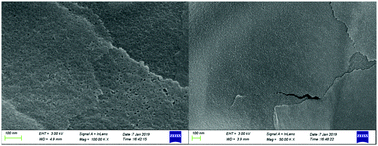Production of furfural from xylose catalyzed by a novel calcium gluconate derived carbon solid acid in 1,4-dioxane†
Abstract
A novel carbon-based solid acid catalyst (SC-GCa-800) was prepared by the carbonization of calcium gluconate at high-temperature followed by sulfonation with 4-diazoniobenzenesulfonate at room temperature. The catalyst was characterized by FT-IR, XPS, TEM, SEM, TGA, N2 adsorption–desorption and elemental analysis to reveal its physical and chemical properties. Furthermore, the effects of reaction temperature, retention time, substrate concentration, catalyst loading and solvent types were investigated. It was demonstrated that SC-GCa-800 is an efficient solid acid catalyst for furfural production obtained from xylose in 1,4-dioxane. A 76.9% furfural yield can be achieved from 100 mg xylose at 140 °C in 40 min by using a 50 mg catalyst. The catalyst showed high stability and could be recycled five times without a significant loss of catalytic activity. The results indicated that the high catalytic activity of SC-GCa-800 was dependent on its high acidity, BET surface and pore structure. More importantly, the furfural can be obtained at low temperature (100–140 °C) and separated easily from the solvent due to the low boiling point of 1,4-dioxane.



 Please wait while we load your content...
Please wait while we load your content...